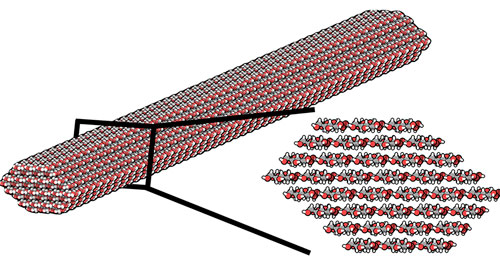| Posted: Oct 02, 2015 |
Nanocellulose materials by design
(Nanowerk News) Theoretically, nanocellulose could be the next hot supermaterial.
|
|
A class of biological materials found within numerous natural systems, most notably trees, cellulose nanocrystals have captured researchers’ attention for their extreme strength, toughness, light weight, and elasticity. The materials are so strong and tough, in fact, that many people think they could replace Kevlar in ballistic vests and combat helmets for military. Unlike their source material (wood), cellulose nanocrystals are transparent, making them exciting candidates for protective eyewear, windows, or displays.
|
|
Although there is a lot of excitement around the idea of nanocellulose-based materials, the reality often falls flat.
|
|
“It’s difficult to make these theoretical properties materialize in experiments,” said Northwestern Engineering’s Sinan Keten. “Researchers will make composite materials with nanocellulose and find that they fall short of theory.”
|
 |
| An illustration of a single cellulose nanocrystal and cross-section.
|
|
Keten, an assistant professor of mechanical, civil, and environmental engineering at Northwestern University’s McCormick School of Engineering, and his team are bringing the world one step closer to a materials-by-design approach toward developing nanocomposites with cellulose. They have developed a novel, multi-scale computational framework that explains why these experiments do not produce the ideal material and proposes solutions for fixing these shortcomings, specifically by modifying the surface chemistry of cellulose nanocrystals to achieve greater hydrogen bonding with polymers.
|
|
Supported by the Army Research Office and National Institute of Standards and Technology, the research appears in the September issue of Nano Letters ("Tuning Glass Transition in Polymer Nanocomposites with Functionalized Cellulose Nanocrystals through Nanoconfinement"). Xin Qin and Wenjie Xia, graduate students in Keten’s lab, are co-first authors of the paper. Robert Sinko, another graduate in Keten’s lab, also contributed to the study.
|
|
Found within the cellular walls of wood, cellulose nanocrystals are an ideal candidate for polymer nanocomposites — materials where a synthetic polymer matrix is embedded with nanoscale filler particles. Nanocomposites are commonly made synthetic fillers, such as silica, clay, or carbon black, and are used in a myriad of applications ranging from tires to biomaterials.
|
|
“Cellulose nanocrystals are an attractive alternative because they are naturally bioavailable, renewable, nontoxic, and relatively inexpensive,” Keten said. “And they can be easily extracted from wood pulp byproducts from the paper industry.”
|
|
Problems arise, however, when researchers try to combine the nanocellulose filler particles with the polymer matrix. The field has lacked an understanding of how the amount of filler affects the composite’s overall properties as well as the nature of the nanoscale interactions between the matrix and the filler.
|
|
Keten’s solution improves this understanding by focusing on the length scales of the materials rather than the nature of the materials themselves. By understanding what factors influence properties on the atomic scale, his computational approach can predict the nanocomposite’s properties as it scales up in size — with a minimal need for experimentation.
|
|
“Rather than just producing a material and then testing it to see what its properties are, we instead strategically tune design parameters in order to develop materials with a targeted property in mind,” Sinko said. “When you are equalizing music, you can turn knobs to adjust the bass, treble, etc. to produce a desired sound. In materials-by-design, we similarly can ‘turn the knobs’ of specific parameters to adjust the resulting properties.”
|

